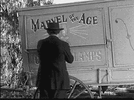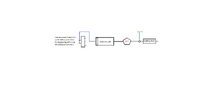The Anytone at-5555+ is the best 10 meter export radio I have ever owned and I just may purchase a second radio for backup and just so I can say I have 2 of them.
You are using an out of date browser. It may not display this or other websites correctly.
You should upgrade or use an alternative browser.
You should upgrade or use an alternative browser.
-
You can now help support WorldwideDX when you shop on Amazon at no additional cost to you! Simply follow this Shop on Amazon link first and a portion of any purchase is sent to WorldwideDX to help with site costs.
Anytone at-5555 PLUS
- Thread starter Eldorado828
- Start date
To keep it simple you can just attach the diode and resistor in the radio as pictured or you can add a 1k ohm pot in place of the resistor as BigBadWolf has documented.The service menu settings woke up my quad 5 a little bit I noticed while tuning the AM high power I watched my watt meter go as high as 50 watts average somewhere above the 200 range so I backed it down to 40 according to my meter.
I'm interested in the npc mod that a guy posted a picture of so many comments back and all I seen was a big through the board type diode added I couldn't tell if anything else was added or extracted so if at all possible would somebody clarify the mod in more detail for me please.
Next moneth when the whole world slows down from the holidays I'm gonna order like say 5 of those Palomar max mods just to have extra plus the one I'm going to put in this radio o.
Nothing is removed in the radio.
Look at the pics closely and read the references that BigBadWolf and I made about the hook up location before doing any solder work. This is an easy and effective mod and I'm not trying to scare anyone from doing it but If a mistake is made in this area of the radio it will knock out the AF modulation components, the Pass Transistor, and anything associated with the Final voltage regulation, and maybe finals and all sorts of bad things can happen. You must be comfortable in your soldering abilities as the location on the right where I hooked the resistor to the SMD diode is the fragile area of the mod. BigBadWolf decided to use one of the test pads near the SMD diode for his hook up location. Both areas are electrically equivalent and correct.
As I wrote about when I first posted this mod, the most versatility of this mod would be realized using the 1k Pot instead of a resistor. BigBadWolf has correctly explained use of the 1K Pot method. (He has pulled off the D-Rail variable bird mod in a V2 chassis lol)
If I can help any more I will try.
73 Panic Attack
Last edited:
I kinda bridged the right test pad to the diode so it would be stronger. I also used very flexible high strand but small wire leads to make the connections. The right side of the connection is the BASE of the transistor and the easiest of the two connections to be made. I wouldn't be drinking coffee to make this connection. Any shaking can remove the micro sized diode your making a connection to. Use a very fine tip iron. I use a TS100 iron to make these connections. Very powerful but small and light in the hand iron. Here is a diagram of how this connection works.To keep it simple you can just attach the diode and resistor in the radio as pictured or you can add a 1k ohm pot in place of the resistor as BigBadWolf has documented.
Nothing is removed in the radio.
Look at the pics closely and read the references that BigBadWolf and I made about the hook up location before doing any solder work. This is an easy and effective mod and I'm not trying to scare anyone from doing it but If a mistake is made in this area of the radio it will knock out the AF modulation components, the Pass Transistor, and anything associated with the Final voltage regulation, and maybe finals and all sorts of bad things can happen. You must be comfortable in your soldering abilities as the location on the right where I hooked the resistor to the SMD diode is the fragile area of the mod. BigBadWolf decided to use one of the test pads near the SMD diode for his hook up location. Both areas are electrically equivalent and correct.
As I wrote about when I first posted this mod, the most versatility of this mod would be realized using the 1k Pot instead of a resistor. BigBadWolf has correctly explained use of the 1K Pot method. (He has pulled off the D-Rail variable bird mod in a V2 chassis lol)
If I can help any more I will try.
73 Panic Attack
Have a look at this BlueBeam and make sure I did this right.
Attachments
You can also add a single pole single throw switch inline with this mod to turn it on and off with. So go stock or swing! Or use a switched pot.
The diagram is right for hook up but it is actually the AF Transistor collector not base.I kinda bridged the right test pad to the diode so it would be stronger. I also used very flexible high strand but small wire leads to make the connections. The right side of the connection is the BASE of the transistor and the easiest of the two connections to be made. I wouldn't be drinking coffee to make this connection. Any shaking can remove the micro sized diode your making a connection to. Use a very fine tip iron. I use a TS100 iron to make these connections. Very powerful but small and light in the hand iron. Here is a diagram of how this connection works.
Have a look at this BlueBeam and make sure I did this right.
Okay, I'll edit thatThe diagram is right for hook up but it is actually the AF Transistor collector not base.
I've been doing a lot of research and studying data sheets mostly on the Palomar max mods and the erd2030+ made by paloma and so far I've learned that they're all just more over rated crap plus I've learned further more the value of learning all this stuff on my own rather than going soulyy up opinions instead of the facts in all future projects and repairs
Exactly what many of us have been saying all along, most of it is just snake oil!I've been doing a lot of research and studying data sheets mostly on the Palomar max mods and the erd2030+ made by paloma and so far I've learned that they're all just more over rated crap plus I've learned further more the value of learning all this stuff on my own rather than going soulyy up opinions instead of the facts in all future projects and repairs

Exactly. I've posted about the max mod a few times.Exactly what many of us have been saying all along, most of it is just snake oil! View attachment 61833
does the at-5555 plus manual have the mic wiring in it? so i can wire up my astatic 575m6 mic to it.
It's wired 4 pin Galaxy\Cobra.does the at-5555 plus manual have the mic wiring in it? so i can wire up my astatic 575m6 mic to it.
1-Shield
2-Audio
3-TX
Just don't use pin 4. It is for channel changing with the stock mic. As a matter of fact I recommend disconnecting pin 4 inside the radio so standard wired 4 pin mics will work.
has anyone found this issue a problem when they operate. the clarifier clicks and is not smooth. even worse, when you turn the clarifier the audio cuts out briefly. very poor design in my opinion, especially the audio cutting out. thoughts?
The Audio muting does suck but contrary to what I thought before I bought the radio I kind of like the clicky clarifier.has anyone found this issue a problem when they operate. the clarifier clicks and is not smooth. even worse, when you turn the clarifier the audio cuts out briefly. very poor design in my opinion, especially the audio cutting out. thoughts?
The clicky clarifier kinda sorta gives me peace of mind knowibg my clarifier is locked in to whatever freq im operating although my clarifier does not mute at all while turningThe Audio muting does suck but contrary to what I thought before I bought the radio I kind of like the clicky clarifier.
dxChat
- No one is chatting at the moment.


